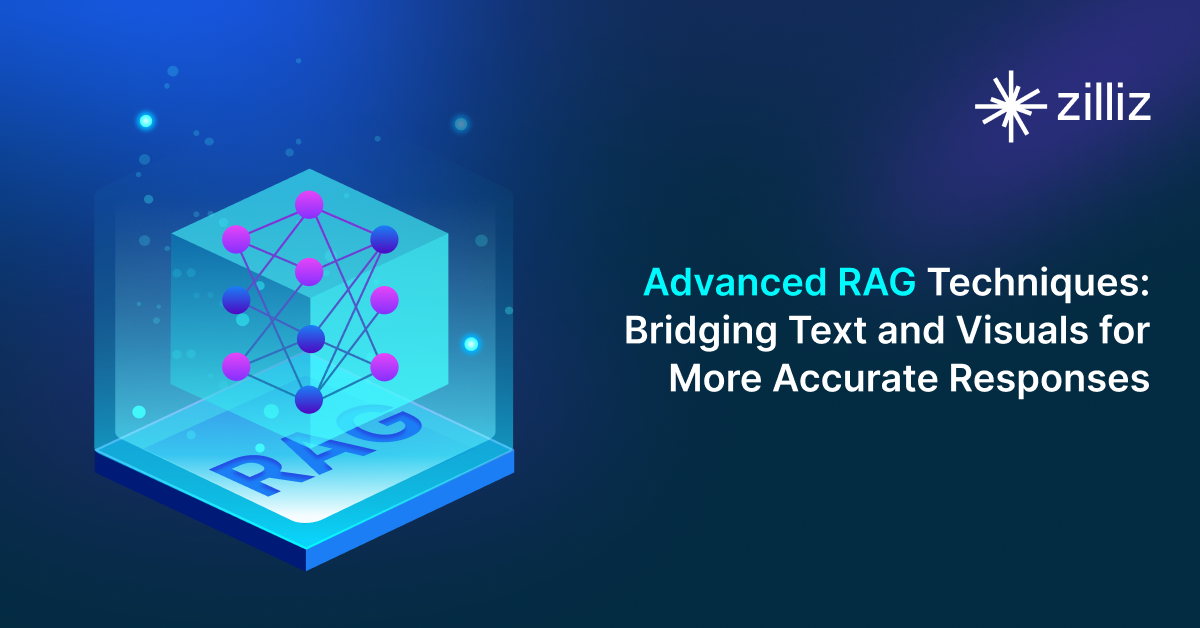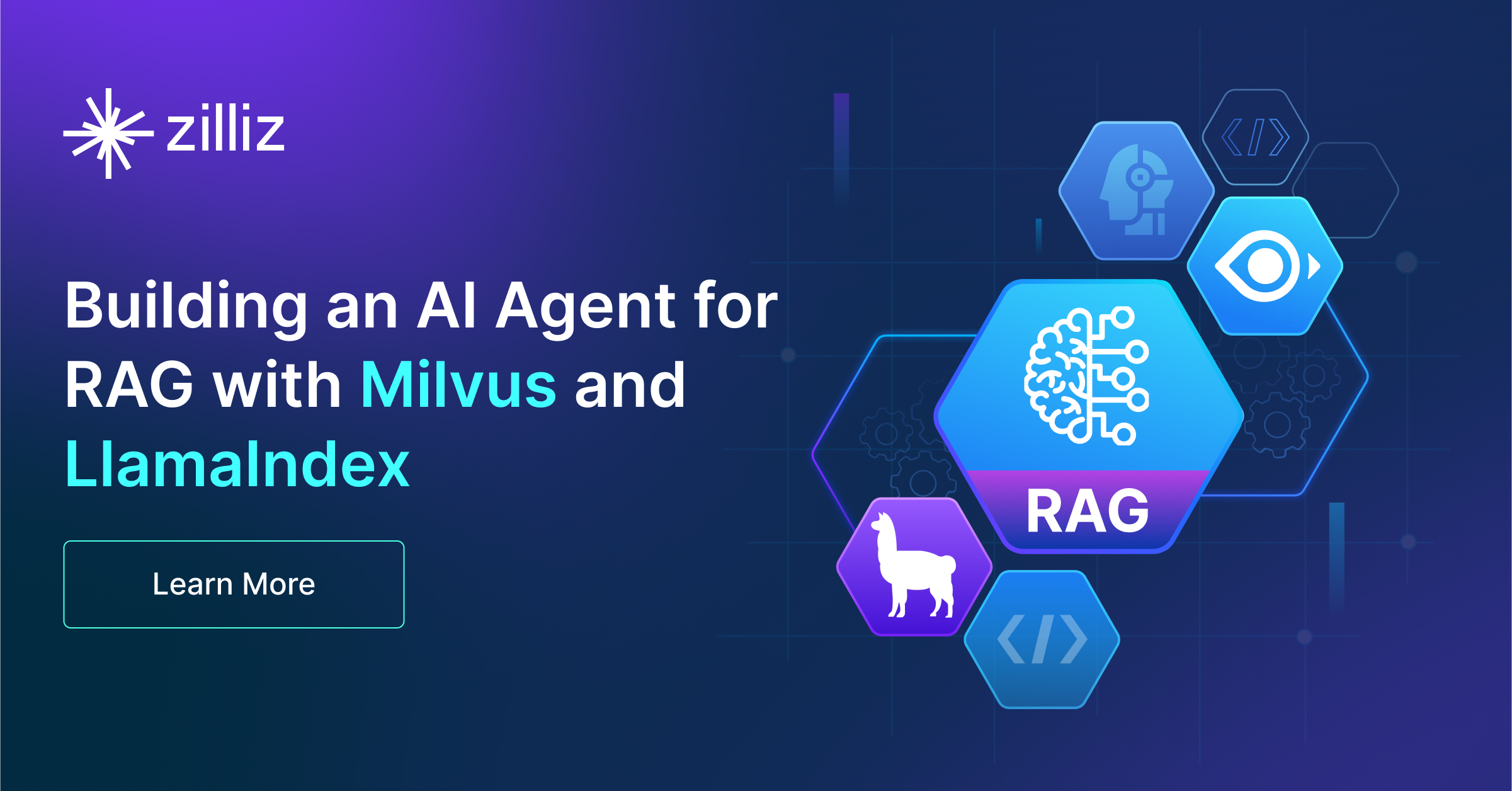Build RAG Chatbot with LangChain, Zilliz Cloud, AWS Bedrock Claude 3 Sonnet, and nomic-embed-text-v1.5
Introduction to RAG
Retrieval-Augmented Generation (RAG) is a game-changer for GenAI applications, especially in conversational AI. It combines the power of pre-trained large language models (LLMs) like OpenAI’s GPT with external knowledge sources stored in vector databases such as Milvus and Zilliz Cloud, allowing for more accurate, contextually relevant, and up-to-date response generation. A RAG pipeline usually consists of four basic components: a vector database, an embedding model, an LLM, and a framework.
Key Components We'll Use for This RAG Chatbot
This tutorial shows you how to build a simple RAG chatbot in Python using the following components:
- LangChain: An open-source framework that helps you orchestrate the interaction between LLMs, vector stores, embedding models, etc, making it easier to integrate a RAG pipeline.
- Zilliz Cloud: a fully managed vector database-as-a-service platform built on top of the open-source Milvus, designed to handle high-performance vector data processing at scale. It enables organizations to efficiently store, search, and analyze large volumes of unstructured data, such as text, images, or audio, by leveraging advanced vector search technology. It offers a free tier supporting up to 1 million vectors.
- AWS Bedrock Claude 3 Sonnet: This model is a powerful version of Claude 3 tailored for seamless integration within AWS Bedrock. It combines advanced natural language processing with robust reasoning skills, ideal for conversational AI, content generation, and personalized customer interactions. Its design emphasizes scalability and efficiency for enterprise-level applications.
- nomic-embed-text-v1.5: This model specializes in generating high-quality text embeddings that capture semantic meaning and contextual nuances. Its strength lies in facilitating efficient similarity search and information retrieval tasks. Ideal for applications in recommendation systems, semantic search, and natural language understanding, it enhances performance in various NLP projects.
By the end of this tutorial, you’ll have a functional chatbot capable of answering questions based on a custom knowledge base.
Note: Since we may use proprietary models in our tutorials, make sure you have the required API key beforehand.
Step 1: Install and Set Up LangChain
%pip install --quiet --upgrade langchain-text-splitters langchain-community langgraph
Step 2: Install and Set Up AWS Bedrock Claude 3 Sonnet
pip install -qU "langchain[aws]"
# Ensure your AWS credentials are configured
from langchain.chat_models import init_chat_model
llm = init_chat_model("anthropic.claude-3-sonnet-20240229-v1:0", model_provider="bedrock_converse")
Step 3: Install and Set Up nomic-embed-text-v1.5
pip install -qU langchain-nomic
import getpass
import os
if not os.environ.get("NOMIC_API_KEY"):
os.environ["NOMIC_API_KEY"] = getpass.getpass("Enter API key for Nomic: ")
from langchain_nomic import NomicEmbeddings
embeddings = NomicEmbeddings(model="nomic-embed-text-v1.5")
Step 4: Install and Set Up Zilliz Cloud
pip install -qU langchain-milvus
from langchain_milvus import Zilliz
vector_store = Zilliz(
embedding_function=embeddings,
connection_args={
"uri": ZILLIZ_CLOUD_URI,
"token": ZILLIZ_CLOUD_TOKEN,
},
)
Step 5: Build a RAG Chatbot
Now that you’ve set up all components, let’s start to build a simple chatbot. We’ll use the Milvus introduction doc as a private knowledge base. You can replace it with your own dataset to customize your RAG chatbot.
import bs4
from langchain import hub
from langchain_community.document_loaders import WebBaseLoader
from langchain_core.documents import Document
from langchain_text_splitters import RecursiveCharacterTextSplitter
from langgraph.graph import START, StateGraph
from typing_extensions import List, TypedDict
# Load and chunk contents of the blog
loader = WebBaseLoader(
web_paths=("https://milvus.io/docs/overview.md",),
bs_kwargs=dict(
parse_only=bs4.SoupStrainer(
class_=("doc-style doc-post-content")
)
),
)
docs = loader.load()
text_splitter = RecursiveCharacterTextSplitter(chunk_size=1000, chunk_overlap=200)
all_splits = text_splitter.split_documents(docs)
# Index chunks
_ = vector_store.add_documents(documents=all_splits)
# Define prompt for question-answering
prompt = hub.pull("rlm/rag-prompt")
# Define state for application
class State(TypedDict):
question: str
context: List[Document]
answer: str
# Define application steps
def retrieve(state: State):
retrieved_docs = vector_store.similarity_search(state["question"])
return {"context": retrieved_docs}
def generate(state: State):
docs_content = "\n\n".join(doc.page_content for doc in state["context"])
messages = prompt.invoke({"question": state["question"], "context": docs_content})
response = llm.invoke(messages)
return {"answer": response.content}
# Compile application and test
graph_builder = StateGraph(State).add_sequence([retrieve, generate])
graph_builder.add_edge(START, "retrieve")
graph = graph_builder.compile()
Test the Chatbot
Yeah! You've built your own chatbot. Let's ask the chatbot a question.
response = graph.invoke({"question": "What data types does Milvus support?"})
print(response["answer"])
Example Output
Milvus supports various data types including sparse vectors, binary vectors, JSON, and arrays. Additionally, it handles common numerical and character types, making it versatile for different data modeling needs. This allows users to manage unstructured or multi-modal data efficiently.
Optimization Tips
As you build your RAG system, optimization is key to ensuring peak performance and efficiency. While setting up the components is an essential first step, fine-tuning each one will help you create a solution that works even better and scales seamlessly. In this section, we’ll share some practical tips for optimizing all these components, giving you the edge to build smarter, faster, and more responsive RAG applications.
LangChain optimization tips
To optimize LangChain, focus on minimizing redundant operations in your workflow by structuring your chains and agents efficiently. Use caching to avoid repeated computations, speeding up your system, and experiment with modular design to ensure that components like models or databases can be easily swapped out. This will provide both flexibility and efficiency, allowing you to quickly scale your system without unnecessary delays or complications.
Zilliz Cloud optimization tips
Optimizing Zilliz Cloud for a RAG system involves efficient index selection, query tuning, and resource management. Use Hierarchical Navigable Small World (HNSW) indexing for high-speed, approximate nearest neighbor search while balancing recall and efficiency. Fine-tune ef_construction and M parameters based on your dataset size and query workload to optimize search accuracy and latency. Enable dynamic scaling to handle fluctuating workloads efficiently, ensuring smooth performance under varying query loads. Implement data partitioning to improve retrieval speed by grouping related data, reducing unnecessary comparisons. Regularly update and optimize embeddings to keep results relevant, particularly when dealing with evolving datasets. Use hybrid search techniques, such as combining vector and keyword search, to improve response quality. Monitor system metrics in Zilliz Cloud’s dashboard and adjust configurations accordingly to maintain low-latency, high-throughput performance.
AWS Bedrock Claude 3 Sonnet optimization tips
Claude 3 Sonnet on AWS Bedrock offers a balance between efficiency and reasoning power, making it a strong choice for general-purpose RAG systems. Optimize retrieval by dynamically adjusting the number of retrieved documents based on query complexity, ensuring relevance without overloading context windows. Structure prompts clearly, keeping key facts upfront to maximize comprehension. Use temperature settings around 0.1–0.3 for high factual accuracy while adjusting top-k and top-p to fine-tune output diversity. Implement caching for frequently used data to improve speed and reduce token costs. Use AWS Bedrock’s scaling options to handle variable traffic efficiently, distributing requests intelligently. If using Sonnet alongside Opus or Haiku, position it as a middle-tier model—handling moderately complex queries without the computational overhead of Opus.
nomic-embed-text-v1.5 optimization tips
nomic-embed-text-v1.5 is a well-rounded embedding model that performs effectively in diverse text retrieval scenarios. Optimize text preprocessing by removing stop words and redundant information before embedding to improve storage efficiency. Use hierarchical indexing structures to manage embeddings in large-scale datasets, improving retrieval speed. Leverage cosine similarity filtering to refine search results post-query. For cost-effective scaling, batch embed multiple documents at once and store embeddings in a distributed vector database like Milvus or FAISS. If dealing with rapidly changing data, implement incremental indexing rather than full reprocessing to save computation time. Regularly monitor embedding quality by validating against a benchmarked dataset to ensure relevance.
By implementing these tips across your components, you'll be able to enhance the performance and functionality of your RAG system, ensuring it’s optimized for both speed and accuracy. Keep testing, iterating, and refining your setup to stay ahead in the ever-evolving world of AI development.
RAG Cost Calculator: A Free Tool to Calculate Your Cost in Seconds
Estimating the cost of a Retrieval-Augmented Generation (RAG) pipeline involves analyzing expenses across vector storage, compute resources, and API usage. Key cost drivers include vector database queries, embedding generation, and LLM inference.
RAG Cost Calculator is a free tool that quickly estimates the cost of building a RAG pipeline, including chunking, embedding, vector storage/search, and LLM generation. It also helps you identify cost-saving opportunities and achieve up to 10x cost reduction on vector databases with the serverless option.
 Calculate your RAG cost
Calculate your RAG cost
What Have You Learned?
What have you learned? Wow, what an incredible journey we've had together! You’ve navigated through an exciting tutorial that has empowered you to integrate some of the most cutting-edge technologies to build a robust Retrieval-Augmented Generation (RAG) system. By leveraging the LangChain framework, you’ve discovered how to seamlessly orchestrate your components, creating a powerful structure that enhances productivity and creativity in your applications.
You’ve seen firsthand how the Zilliz Cloud vector database accelerates data retrieval with lightning-fast searches, allowing you to work smarter and more efficiently. Coupled with this, you tapped into the extraordinary capabilities of the AWS Bedrock Claude 3 Sonnet model, which fuels your system with remarkable conversational intelligence, enabling natural and engaging interactions. Additionally, the nomic-embed-text-v1.5 embedding model has helped you generate rich semantic representations, setting the stage for deep understanding and contextual relevance in your RAG applications.
And let’s not forget the handy optimization tips and the free cost calculator we shared. These tools will be instrumental as you refine and enhance your system. So, what’s next? Dive in! Start building, optimizing, and innovating your own RAG applications. The sky’s the limit! Embrace your creativity, and don’t hesitate to experiment. The future is bright, and it’s waiting for your unique contributions! Happy coding!
Further Resources
🌟 In addition to this RAG tutorial, unleash your full potential with these incredible resources to level up your RAG skills.
- How to Build a Multimodal RAG | Documentation
- How to Enhance the Performance of Your RAG Pipeline
- Graph RAG with Milvus | Documentation
- How to Evaluate RAG Applications - Zilliz Learn
- Generative AI Resource Hub | Zilliz
We'd Love to Hear What You Think!
We’d love to hear your thoughts! 🌟 Leave your questions or comments below or join our vibrant Milvus Discord community to share your experiences, ask questions, or connect with thousands of AI enthusiasts. Your journey matters to us!
If you like this tutorial, show your support by giving our Milvus GitHub repo a star ⭐—it means the world to us and inspires us to keep creating! 💖
- Introduction to RAG
- Key Components We'll Use for This RAG Chatbot
- Step 1: Install and Set Up LangChain
- Step 2: Install and Set Up AWS Bedrock Claude 3 Sonnet
- Step 3: Install and Set Up nomic-embed-text-v1.5
- Step 4: Install and Set Up Zilliz Cloud
- Step 5: Build a RAG Chatbot
- Optimization Tips
- RAG Cost Calculator: A Free Tool to Calculate Your Cost in Seconds
- What Have You Learned?
- Further Resources
- We'd Love to Hear What You Think!
Content
Vector Database at Scale
Zilliz Cloud is a fully-managed vector database built for scale, perfect for your RAG apps.
Try Zilliz Cloud for Free


